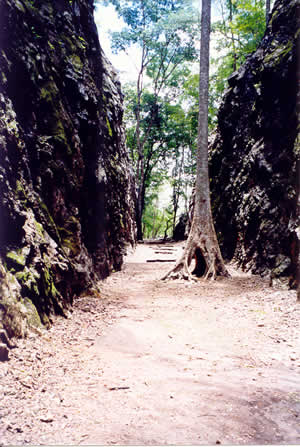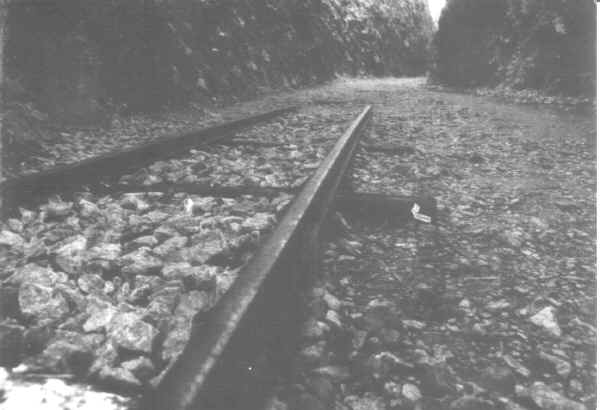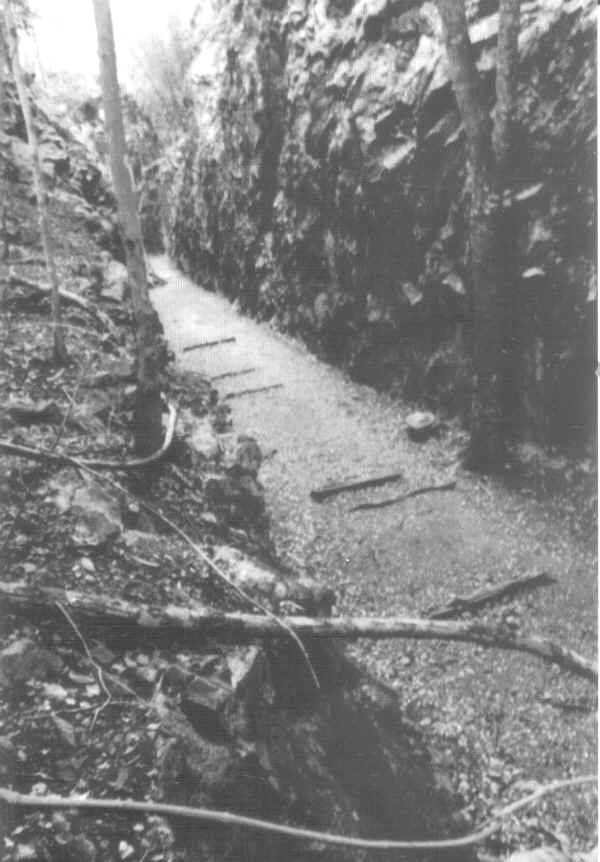 |
|
|||
|
|
||||
|
Burma to Siam (Thailand) or "Death" Railway |
 |
|
 |
Trees have had
time to grow in Hellfire Pass
since Aussies hacked their way through the solid rock to make this
cutting on the Death Railway.
But time should never be allowed to dull our memory of the suffering and torture inflicted on the men who did this work. They had little in the way of modern tools, were undernourished and over worked and were suffering from a dreadful range of tropical diseases and other problems caused by chronic malnourishment. They died in the thousands. 12 months earlier they were young, fit, healthy men. Now they were like walking skeletons. The Burma-Siam Railway was built by British, Australian, Dutch and American prisoners-of-war. It was built as a Japanese project to improve communications in order to maintain the large Japanese army in Burma. |
| During its construction, about 13,000 prisoners-of-war died, mainly of
sickness, malnutrition and exhaustion - and were buried along the
railway.
The railway was set for completion in 14 months, which was to
coincide with the end of 1943. The labour utilised consisted of those
captured in South-East Asia and the Pacific. From June 1942, large
numbers of POW's were transferred from Java, Sumatra and Singapore. Two
forces were formed, one based in Siam (Thailand) and the other based in
Burma (Myanmar), and were set to meet in the middle. For the duration of the railway work, food supplies were
inadequate and extremely irregular. These were substituted by Red Cross
parcels, which were frequently held up by the Japanese. Numbers of sick
were always high, being affected by malaria, dysentery and vitamin
deficiency conditions. partly
from
http://www.australianwargraves.org |
|
|
|
|


